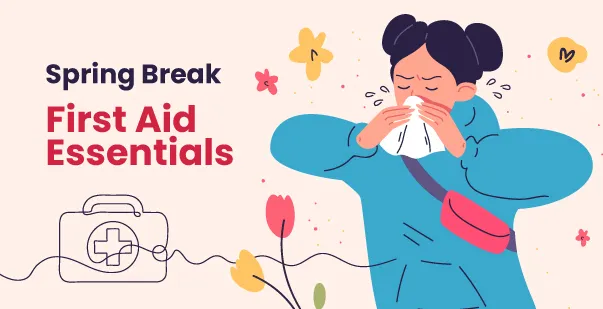Did you know that alcohol-related deaths among young adults spike by 23% during spring break compared to other weeks of the year? What about the fact that emergency rooms in popular spring break destinations see a 20-25% increase in trauma cases during this time?
Spring Break is all about fun, sun, and adventure—but did you know that nearly 50,000 people are injured each year during this wild week? From cliff diving gone wrong to bonfires that get too lit, some activities are riskier than you think! Jet skiing? A wrong turn can lead to serious injuries. Drinking games? They’re all fun until someone gets alcohol poisoning. Even simple beach days can turn dangerous with jellyfish stings or heat exhaustion. That’s why knowing basic first aid is a total game-changer.
The Wildest (and Most Dangerous) Spring Break Activities
Spring break is all about adventure, but some activities come with more risk than others. Whether it’s a heart-racing cliff jump or an impulsive moped rental, being unprepared can turn fun into disaster in seconds.
Cliff Jumping & Diving – The Leap of (Bad) Faith
Jumping off a cliff into turquoise waters is a rite of passage for many spring breakers, but this activity is also a common cause of severe injuries. Misjudging the height, depth, or landing spot can result in broken bones, concussions, or even spinal injuries. Underwater rocks are often invisible from above, and hitting the water at a bad angle can lead to serious trauma. The danger increases when alcohol is involved, impairing judgment and reaction time.
If someone is struggling to move after a bad jump, do not attempt to reposition them—this could worsen a potential spinal injury. Keep them still and call for emergency help immediately.
ATV & Scooter Rentals – When the Road Fights Back
ATVs and scooters are a popular way to explore beach towns and tropical destinations, but they can also be a major hazard for inexperienced riders. Many tourists rent these vehicles without helmets or proper training, leading to accidents involving road rash, fractures, and head injuries. In places like South Padre Island and Cancun, traffic incidents involving reckless or impaired riders spike dramatically during spring break.
If someone takes a fall, assessing their injuries is crucial. For road rash, clean the wound with fresh water, apply antiseptic, and cover it with a bandage to prevent infection. If a head injury is suspected, keep them still and monitor for dizziness, nausea, or confusion—signs of a concussion.
Binge Drinking – The Hangover You Don’t Wake Up From
Alcohol and spring break go hand in hand, but binge drinking can quickly escalate into alcohol poisoning, blackouts, and serious health risks. Party games and bottomless drink specials encourage excessive alcohol consumption, often leading to dehydration, heatstroke, or even unconsciousness. Many spring-breakers make the dangerous mistake of leaving intoxicated friends unattended, assuming they’ll “sleep it off.”
Suppose someone is showing signs of alcohol poisoning—slow breathing, vomiting, or unresponsiveness—never leave them alone. Lay them on their side to prevent choking, try to keep them awake, and call for medical help immediately.
Water Sports Gone Wrong – Jet Ski Wipeouts & Parasailing Disasters
Jet skiing, wakeboarding, and parasailing are spring break favourites, but they come with risks that many thrill-seekers underestimate. Collisions between jet skis can cause severe trauma while wakeboarding wipeouts often lead to sprains, fractures, or concussions. Parasailing accidents, though rarer, can be life-threatening if faulty equipment leads to a crash landing.
If someone falls unconscious in the water, they need CPR immediately once on shore. For minor injuries like sprains or bruises, ice packs can reduce swelling, but more serious trauma requires professional medical evaluation.
Spring Break Fights – Not Enough Common Sense
Crowded clubs, long drink lines, and a little too much liquid courage can be the perfect storm for unnecessary fights. What starts as a minor disagreement over a spilt drink can quickly escalate into a brawl, leading to injuries such as broken noses, black eyes, or even concussions.
For minor injuries, applying pressure with a clean cloth can stop bleeding, while an ice pack is a spring break must-have that can reduce swelling. However, if someone loses consciousness or shows signs of a serious head injury, emergency medical attention is necessary.
First Aid Must-Knows for Spring Break Survival
During spring break, one unexpected accident can turn paradise into a nightmare. Imagine watching helplessly as a friend struggles to breathe after a severe allergic reaction or missing out on the biggest party of the year because you didn’t know how to treat a nasty jellyfish sting.
Each year, nearly 227,000 people lose their lives to unintentional injuries, according to the National Center for Health Statistics, many of which could have been prevented with basic first aid knowledge.
Don’t let a lack of preparation ruin your trip. Knowing first aid and packing the right essentials can mean the difference between a quick recovery and a trip to the emergency room. Read on to learn how to handle the most common spring break injuries:
CPR & Choking Emergencies – When Every Second Counts
CPR (Cardiopulmonary Resuscitation) is one of the most important first aid skills to know, especially if you’re spending time around water. Drowning is a leading cause of accidental death during spring break, particularly in destinations with high alcohol consumption and strong ocean currents.
If someone is unconscious and not breathing:
- Call for Help – Immediately dial emergency services or alert a lifeguard.
- Check for Breathing – Tilt their head back slightly and listen for normal breathing. If they are gasping or unresponsive, start CPR.
- Begin Chest Compressions – Place both hands in the center of the chest and push hard and fast (at least 100–120 compressions per minute). Think of the beat to “Stayin’ Alive” by the Bee Gees—it’s the perfect rhythm.
- Rescue Breaths (If Trained) – After every 30 compressions, give 2 rescue breaths by pinching their nose, sealing your mouth over theirs, and breathing into their lungs.
- Continue Until Help Arrives – Don’t stop unless someone with medical training takes over or the person regains consciousness.
Do you know you’re more likely to choke to death on your favorite meal (1 in 2,659) than be killed in a plane crash or an accidental gun discharge? Scary, right? Now imagine a friend choking on food, alcohol, or something they swallowed at the beach. Would you know how to help? Here’s what you need to do,
- Stand behind them and wrap your arms around their waist.
- Make a fist and place it just above their belly button.
- Perform the Heimlich maneuver by thrusting inward and upward until the object is dislodged.
- If they become unconscious, start CPR immediately.
Pro Tip: Even if someone recovers from choking, they should still be checked by a medical professional to ensure no internal damage.
Treating Cuts, Scrapes, and Bruises – Avoiding Infection and Scars
Cuts and scrapes are common spring break injuries, whether they come from a fall on rough pavement, an accident while hiking, or even broken glass at a party. The main goal when treating these wounds is to prevent infection and minimize scarring.
What to Do:
- Stop the Bleeding: Apply direct pressure with a clean cloth or bandage.
- Clean the Wound: Rinse with clean water (avoid ocean or pool water, as it can contain bacteria).
- Apply Antiseptic: Use alcohol wipes or an antiseptic solution to prevent infection.
- Cover with a Bandage: Keep the wound clean and dry; change the bandage daily.
- Monitor for Infection: If the area becomes red, swollen, or starts oozing pus, seek medical help.
For bruises, apply an ice pack (wrapped in a cloth) for 15-20 minutes every few hours to reduce swelling and pain. If the cut is deep or the bleeding won’t stop after 10 minutes, it may need stitches.
Handling Heatstroke & Dehydration – The Silent Party Killer
Spending long hours in the sun while drinking can lead to severe dehydration and heatstroke, both of which can quickly become medical emergencies. In fact, heat waves are responsible for more than 14,000 deaths in the U.S. When your body isn’t getting enough water, signs like dry mouth, extreme thirst, dark urine, and fatigue start creeping in. And if it gets worse, things can take a dangerous turn.
Additionally, heatstroke can be serious, too. A high body temperature (103°F+), rapid heartbeat, nausea, vomiting, and confusion are all red flags. In severe cases, it can even lead to loss of consciousness.
Your body is always sending signals; don’t ignore them. Stay hydrated, listen to what you need, and take care of yourself, especially in the heat!
What to Do:
- Move the person to a cool or shaded area immediately.
- Give them small sips of water (not alcohol or caffeine).
- Cool their body by wetting their skin and fanning them.
- Loosen tight clothing and remove unnecessary layers.
- If they lose consciousness, call emergency services immediately.
Pro Tip: Prevent heat exhaustion by staying hydrated, wearing sunscreen, and taking breaks in the shade.
Alcohol Poisoning – When “One More Shot” Becomes Dangerous
Drinking too much too fast can shut down the body’s ability to function, causing alcohol poisoning, which can be fatal if untreated. A major mistake people make is thinking their unconscious friend just needs to “sleep it off”, then this can be deadly. Alcohol poisoning is a life-threatening emergency. If someone is unconscious and vomiting, struggling to breathe (slow, irregular, or even stopped), having seizures, or showing blue or pale skin, their body is in serious distress. These are clear signs that they need immediate medical attention.
What to Do:
- Call 911 or seek medical help immediately.
- Turn them on their side to prevent choking if they vomit.
- Stay with them and monitor their breathing.
- Do NOT let them drink coffee, take a cold shower, or try to “walk it off”—these do nothing to help and can make things worse.
Pro Tip: If you’re drinking, pace yourself. Set a personal limit, drink water between alcoholic beverages, and eat food to slow alcohol absorption.
Jellyfish Stings & Ocean Hazards – The Unexpected Beach Nightmare
Nothing ruins a beach day faster than a nasty jellyfish sting. Contrary to popular belief, peeing on a sting does NOT help—in fact, it can make things worse by releasing more venom.
What to Do:
- Get out of the water immediately to avoid more stings.
- Rinse the area with vinegar or saltwater—never use fresh water, as it can trigger more venom release.
- Use tweezers to remove any tentacles still attached to the skin.
- Soak the sting in hot water (not scalding) for 20–45 minutes to reduce pain.
- Avoid scratching or rubbing the area, as this can spread the toxins.
If a person has trouble breathing, swelling, or dizziness, seek emergency medical attention immediately—this could indicate an allergic reaction.
Pro Tip: If you’re travelling to a jellyfish-prone area, pack vinegar in your beach bag, just in case.
Conclusion: Make Spring Break Memorable (For the Right Reasons!)
Spring break should be legendary for the fun, not for a hospital visit. By staying aware of dangerous activities and knowing first aid essentials, you can have an unforgettable time while staying safe.
A little preparation goes a long way. Be the friend who knows how to handle a crisis—it could make all the difference. Your squad will appreciate having someone who looks out for them. That way, you can all enjoy the best parts of spring break without unnecessary risks.
After all, the best memories are made when you’re healthy, happy, and free from avoidable mishaps. So pack your bags, plan wisely, and get ready for an unforgettable spring break!







